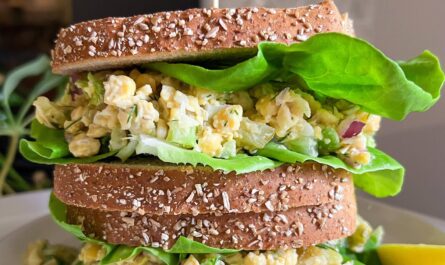Frozen Pastries – A Convenient Snacking Option
With fast-paced lifestyles and hectic schedules, consumers are increasingly opting for convenient ready-to-eat snack options. Frozen pastries have emerged as a popular snacking choice due to their long shelf life and minimal preparation needs. In this article, we explore the various types of frozen pastries available in the market and discuss the factors driving their rising demand.
Types of Frozen Pastries
There is a wide variety of frozen pastries that can be found in grocery store freezers. Some of the most common varieties include:
Frozen Pastries – A Convenient Snacking Option
Pies and Tarts
Apple, cherry, berry and fruit-filled hand pies or tarts are among the top-selling frozen pastry items. Many brands offer a variety of pre-baked or pre-rolled pie and tart crusts that just need topping.
Cookies
Sugar cookies, chocolate chip cookies and other classic flavors are hugely popular choices. Oatmeal raisin and peanut butter varieties are also widely available.
Doughnuts
Old-fashioned cake doughnuts, yeast-raised doughnuts and mini doughnuts come frozen and just need frying or baking as per instructions. Glazes and toppings can be added afterwards.
Turnovers and Handheld Pies
Turnovers filled with fruits, jams, meats or vegetables make for tasty handheld snacks. Apple, cherry and spinach-feta varieties are common.
Croissants and Danish Pastries
Butter croissants, cheese or fruit Danish provide a sweet or savory breakfast or snacking option. Refrigerated crescent roll dough is also widely found.
Convenience and Long Shelf Life
One of the major factors driving the popularity of frozen pastries is convenience. From pies and tarts to doughnuts, all frozen pastry items can be easily kept in freezers until needed. They lend themselves to popping in the oven without much advance preparation time.
Their long frozen shelf life of 4-6 months allows stocking up on favorites. Frozen pastries don’t spoil or go stale like baked goods, ensuring snacking satisfaction over weeks and months. Some items like turnovers and filled croissants even eliminate the hassle of rolling or shaping dough from scratch.
Handheld Options for On-The-Go Lifestyles
An increasingly mobile lifestyle with work, school and extracurricular responsibilities has boosted demand for snacking options that can be eaten with one hand on-the-go.
Portable pastries like fruit or savory hand pies, turnovers, mini doughnuts and breakfast Danish filled this need for time-pressed consumers. Their individually portioned and wrapped or baked formats make them perfect for grabbing quickly without mess.
Rising Popularity of Specialty Flavors
Frozen pastry producers continue to appeal to taste bud cravings by expanding their flavor variety. In addition to staples like apple and cherry, unique flavors featuring pumpkin, salted caramel, chai spice and mango are gaining ground.
Gluten-free, vegan and paleo-friendly options in nut and coconut crusts further widen consumer appeal. Exotic flavors inspired by global cuisines have also become more prominent across private label and branded frozen pastries.
Health and Wellness Trends Impact Formulations
With rising health consciousness, frozen pastry brands are reducing sugar, saturated fat and artificial ingredients in their products. Items featuring whole grains in crusts and fillings high in fiber, protein and antioxidants are attracting attention.
Some produce pastries that are not only delicious but also nutritious enough to comprise a complete breakfast or snack. Low-calorie, keto-friendly and paleo versions further align portfolios with current wellness trends.
Concerns over Preservatives and Unhealthy Fats
While convenience remains a major driver of frozen pastry growth, some consumers are also wary of their preservative content and higher saturated fat levels from frying.
Producers are addressing these concerns by using clean-label and fewer artificial preservatives. Non-stick or parchment paper-lined baking also eliminates the need to deep fry items. But health trade-offs compared to homemade pastries still remain a limitation.
Private Label Growth and Innovation
Large grocers and retailers have aggressively expanded their frozen private label pastries selection over the last few years. High-quality, creatively packaged house brands offer excellent value and variety compared to major national brands.
They cater to diverse regional tastes with ethnic and seasonal limited editions. Cutting-edge innovations include protein-packed breakfast pastries, single-serve snacking pouches and naturally sweetened options made more healthful. Private label growth is expected to continue taking market share.
Rising Coffee Consumption Powers Sales
Coffee shops sell copious pastries and baked goods each day to accompany hot and cold beverages. The trend is now permeating homes with gourmet coffee machine and pod sales booming globally.
Consumers pair premium roasted beans with treats from croissants to cinnamon rolls and Danishes. This has further lifted demand for affordable frozen versions available anytime to sync with coffee or tea breaks.
Baked goods consumption is strongly ingrained in many cultures across rituals like breakfasts, after-school snacks or relaxed evenings. With hectic lives, frozen pastries fulfill this indulgence easily without compromising on taste or quality.
Their long shelf life also minimizes waste compared to perishables. Industry innovation and diversity in flavors, formats, wellness positioning, and value options will likely propel continued growth and popularity of frozen pastries. They have firmly rooted themselves as a convenient snack of choice for households globally.
Note:
1. Source: Coherent Market Insights, Public sources, Desk research
2. We have leveraged AI tools to mine information and compile it




